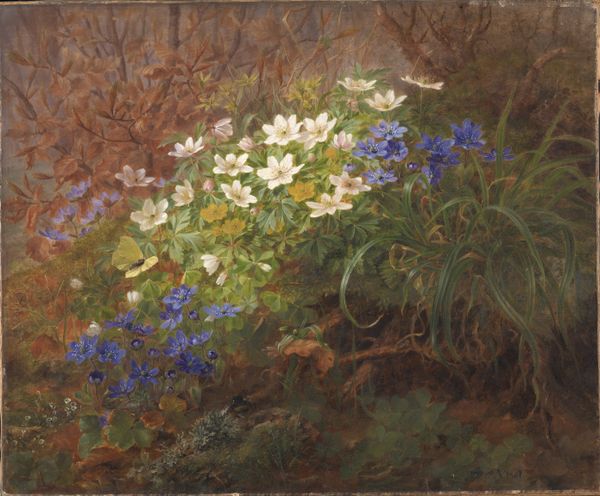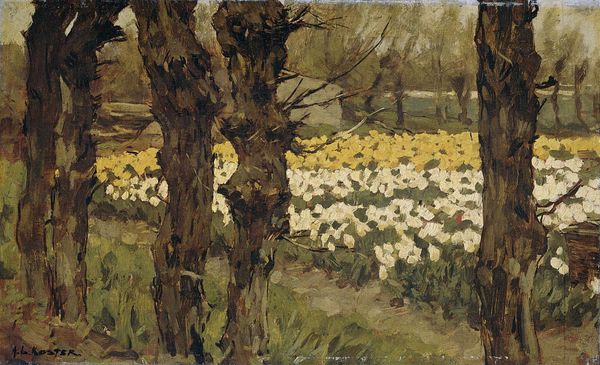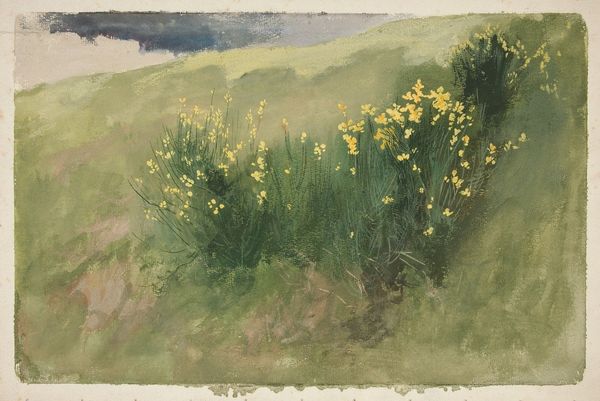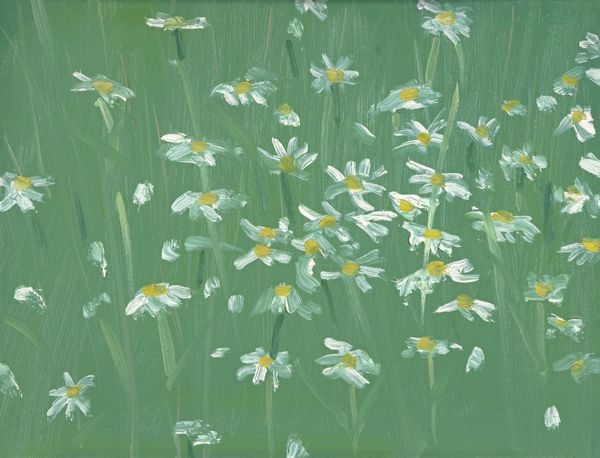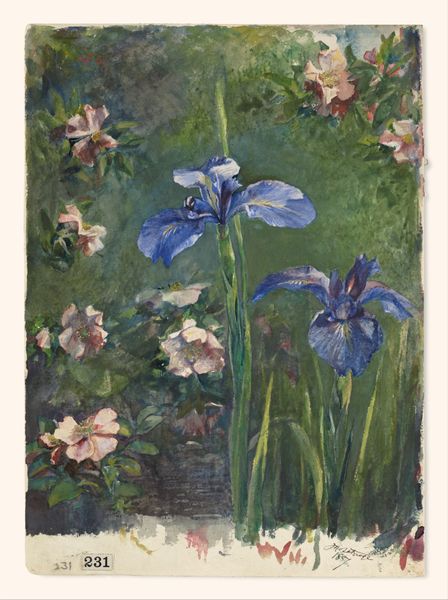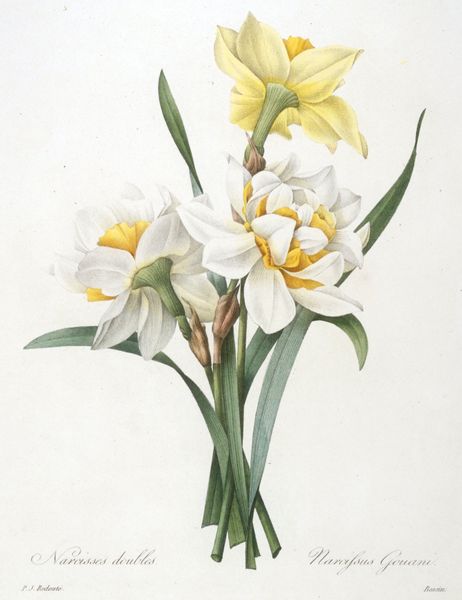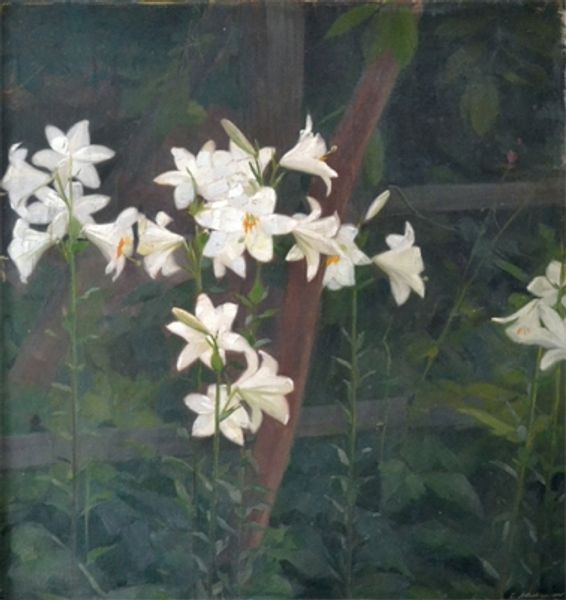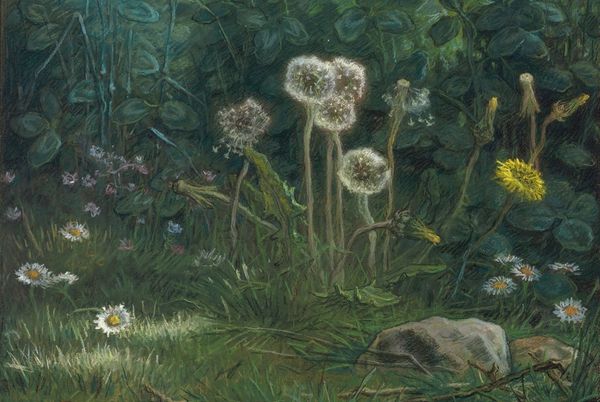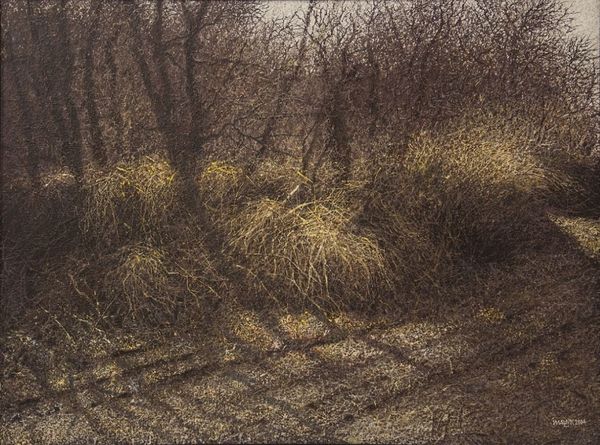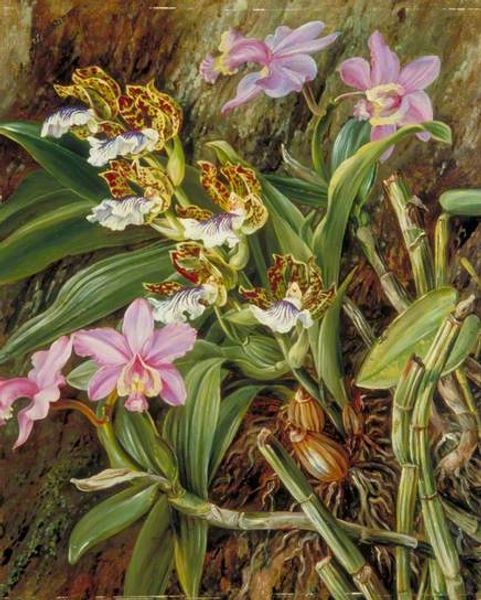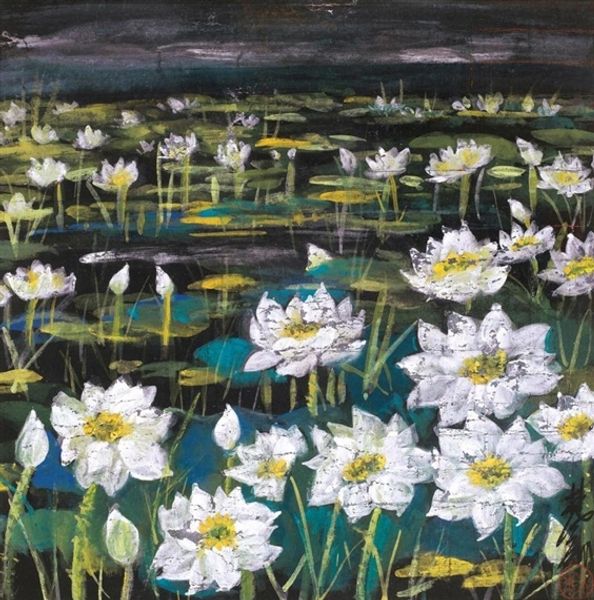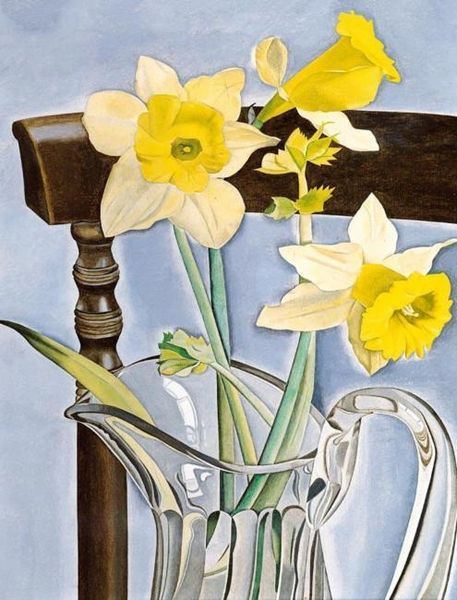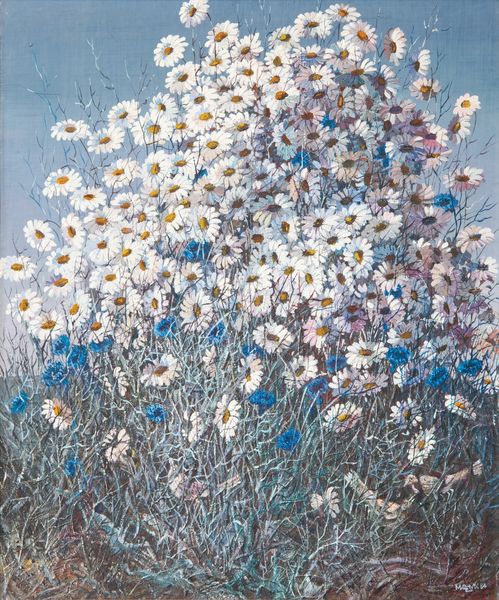
Dimensions: 40 x 50 cm
Copyright: Public domain
Curator: Let’s turn our attention to "Narcissi and Violets," a piece made around 1867 by Jean-François Millet. You can find it here at the Kunsthalle Hamburg. Editor: It’s much darker than I anticipated. The blooms are radiant, almost phosphorescent against a murky background. There’s an interesting contrast there. What materials did Millet use? Curator: This work combines pastel and pencil. Millet was really exploring the tonal range and textures achievable with these relatively accessible media. Consider the labor of collecting and processing such materials in the mid-19th century. Editor: True, there is an apparent accessibility, even rawness. You get the sense that Millet really worked this piece, layering the pastel to create those vibrant yellows, and using the pencil to delineate and deepen the shadows. Did naturalism shape his art? Curator: Certainly. He rose to prominence painting rural life and peasant figures. There's an argument that he saw a noble purity in nature, distinct from the pressures of modern, urban existence, something we often see reflected in the art market's growing interest in nature during this period. Editor: And yet, looking at this, I also sense a romantic sensibility. These flowers, bravely emerging in what appears to be quite a harsh, shaded setting… it’s charged with a certain resilience. Curator: Yes, that tension—the pull between naturalist observation and romantic idealization—characterizes a lot of his work. It clearly shows his understanding of the social concerns surrounding nature, but there's also that artistic interpretation of the plants in how the darks contrast sharply with the light florals in a manner consistent with Romantic paintings of the Sublime. Editor: Interesting how something that seems simple, a modest still life, holds such complexity when we start to tease at it. I was originally captured by the materiality of the pigments and pencil, and now understand it more profoundly. Curator: Exactly. It reveals the convergence of art, social commentary, and changing attitudes towards nature during that era. Thanks for joining me today to unpack its richness.
Comments
No comments
Be the first to comment and join the conversation on the ultimate creative platform.
